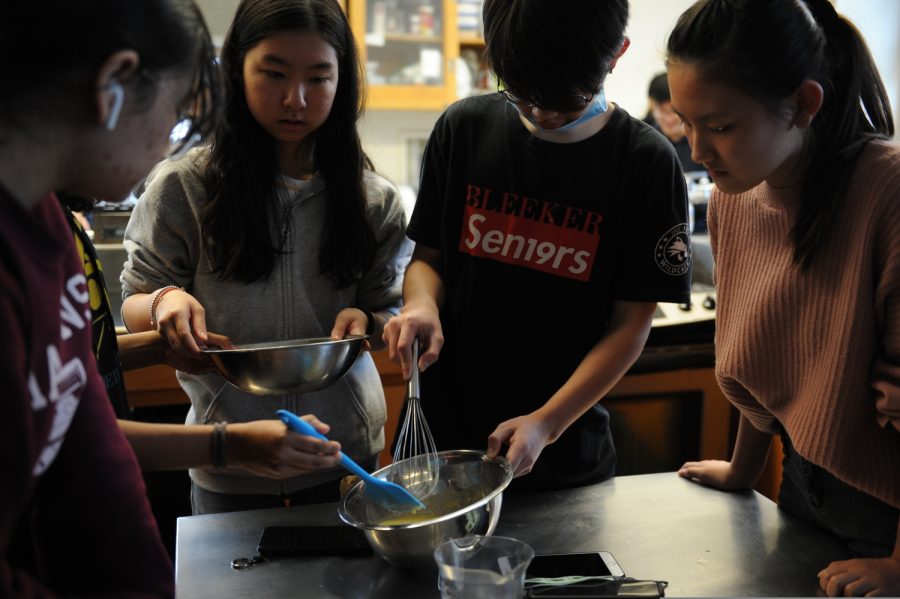FDA Approves the First Peanut Allergy Drug
Members of Edible Arts club are required to fill out allergy forms prior to making food in order to prevent allergic reactions.
In the United States, approximately one in fifty children suffer from peanut allergies, making it the second most common food allergy in adolescents. Unfortunately, only one of five children outgrow their allergy. In late January 2020, the Food and Drug Administration (FDA) approved the first-ever drug to treat peanut allergies in children. Aimmune Therapeutics Inc., a biopharmaceutical company specialized in producing treatments for food allergies, manufactured Palforzia (Peanut Allergen Powder-dnfp), which relieves the mild and life-threatening allergic reactions caused by peanuts like anaphylaxis, among many other symptoms.
Palforzia, however, is not a cure. Rather, it uses a method of desensitization, called oral immunotherapy. During this treatment process, the patient is required to ingest increasing doses of peanut protein while continuing to avoid peanut encounters. This gradually allows their body to build immunity against the proteins. The drug is administered in three phases over a six month period: initial dose escalation, up-dosing, and maintenance. During these three phases, a patient will consume semi-solid food mixed with peanut powder from the prescribed capsules or sachet. The dosage level of peanuts increases eleven times over the course of months.
According to the FDA website, the potential side effects of Palforzia include “abdominal pain, vomiting, nausea, tingling in the mouth, itching (including in the mouth and ears), cough, runny nose, throat irritation and tightness, hives, wheezing and shortness of breath and anaphylaxis.” Because of the potential risks of severe reactions, patients must be under the supervision of a doctor and have access to epinephrine when being treated. In order to receive the treatment, children between the ages of four to seventeen need to be officially diagnosed with a peanut allergy. The drug will only be available through certified healthcare providers, health care settings, and pharmacies to patients enrolled in a Risk Evaluation and Mitigation Strategy (REMS) program. During the first two phases, it is essential that patients are monitored and that their symptoms are identified.
For many people who have been suffering from peanut allergies, the options for nut allergy treatment are extremely limited. For example, Garreth Hui ’20 said, “I’m allergic to all nuts, so asking and listening for specificity is really clear. I was also taught to be really forthcoming about my allergy so that my servers and the people preparing my food would [do so] extra carefully.” For many people with allergies, avoidance and the injection of epinephrine when anaphylaxis occurred was the only way to mitigate life-threatening symptoms. “I carry around an EpiPen and Benadryl in the very scary case that I have a reaction,” said Hui.
Similarly, Bronx Science clubs centered around making food, like Edible Arts, need to take precautions in order to prevent their members from having allergic reactions. “At the beginning of the school year, during our first meeting, we usually go over safety precautions and hand out allergy forms. We try our best to avoid certain foods such as nuts, or any other foods that may cause dangerous allergic reactions,” said club member Jake Wang ’20.
For the many people who choose to go under treatment, the results may be life-changing. The approval of Palforzia is just the first step into bettering the lives of millions of people who suffer from allergies.
“I carry around an EpiPen and Benadryl in the very scary case that I have a reaction,” said Garreth Hui ’20.
Suzie Yu is a Online Newspaper Editor for the ‘Science Survey’ and an Athletics Section Reporter for ‘The Observatory.’ She finds journalistic...
Sazida Marzia is the Chief Graphic Design and Layout Editor for ‘The Science Survey’. She loves photography and being able to show the unseen side...

